- Crassula Care at Home: Essential Tips for Growing and Maintaining
- Choose the Right Location
- Provide Well-Draining Soil
- Watering
- Fertilization
- Pruning
- Pest Control
- Conclusion
- Crassula Types: A Variety of Stunning Options to Choose From
- 1. Crassula ovata (Jade Plant)
- 2. Crassula arborescens (Silver Dollar Plant)
- 3. Crassula capitella (Campfire Plant)
- 4. Crassula perforata (String of Buttons)
- 5. Crassula muscosa (Watch Chain Plant)
- 6. Crassula rupestris (Baby’s Necklace)
- 7. Crassula pubescens (Gollum Jade)
- Crassula Varieties: Exploring the Unique Characteristics
- 1. Crassula ovata (Jade Plant)
- 2. Crassula perforata (String of Buttons)
- 3. Crassula tetragona (Mini Pine Tree)
- 4. Crassula muscosa (Watch Chain)
- 5. Crassula tetragona (Princess Pine)
- Proper Lighting for Crassula: Ensuring Ideal Conditions
- Types of Lighting
- Lighting Requirements
- Signs of Improper Lighting
- Watering Crassula: Dos and Don’ts for Keeping Them Hydrated
- Do:
- Don’t:
- Crassula Propagation: Easily Creating New Plants
- 1. Leaf Propagation
- 2. Stem Cutting Propagation
- 3. Division
- 4. Offsets
- Common Pests and Diseases: How to Protect Your Crassula
- Pests
- Diseases
- Tips for Decorating with Crassula: Indoor and Outdoor Ideas
- Indoor Decorating Ideas
- Outdoor Decorating Ideas
- Q&A:
- What is Crassula?
- What are the common types of Crassula?
- What are the care requirements for Crassula?
- How often should I water my Crassula plant?
- Can I propagate Crassula plants?
- What should I do if my Crassula plant is not growing well?
- Video: Stacked Crassulas: See 20+ Square Succulents, Plus Care, Selection, Design, Propagation, Planting
Crassula is a popular plant that is often grown at home due to its low maintenance requirements and attractive appearance. It belongs to the Crassulaceae family and is native to various regions, including South Africa and Madagascar. Crassula plants are known for their fleshy leaves and beautiful flowers, making them a favorite among plant enthusiasts.
One of the reasons why Crassula is favored by many is its ability to thrive in a variety of conditions. It is a drought-tolerant plant, which means it can withstand periods of water scarcity. This makes it an ideal choice for those who often forget to water their plants or live in regions with limited water resources.
When it comes to care, Crassula requires bright light but can tolerate some shade. It is best to place it near a window where it can receive indirect sunlight for a few hours each day. Overexposure to direct sunlight can cause sunburn and damage the leaves of the plant.
There are various types and varieties of Crassula, each with its own unique characteristics and requirements. Some popular varieties include Crassula ovata (also known as Jade Plant or Money Plant), Crassula argentea (Silver Dollar Plant), and Crassula perforata (Necklace Vine). Each type has its own distinct leaf shape and color, adding diversity to any plant collection.
Crassula Care at Home: Essential Tips for Growing and Maintaining
Crassula is a popular succulent plant that is loved by many due to its unique appearance and easy care requirements. Whether you are a beginner or an experienced gardener, here are some essential tips to help you grow and maintain your crassula plants at home.
Choose the Right Location
Crassula plants thrive in bright and indirect sunlight. Find a location in your home that receives at least 6 hours of sunlight every day. Placing them near a south-facing window or under a grow light will provide them with the ideal amount of light. However, be cautious of placing crassula plants in direct sunlight as it can scorch their leaves.
Provide Well-Draining Soil
Crassula plants prefer sandy or well-draining soil that allows excess water to flow out easily. Use a cactus or succulent mix that is specifically formulated for these types of plants. If you prefer to make your own soil mix, combine equal parts of potting soil, perlite, and coarse sand to create a well-draining environment for your crassula plants.
Watering
It is important to water your crassula plants properly to ensure their health and avoid overwatering. Allow the soil to dry out completely between waterings, and then thoroughly water until water drains out from the bottom of the pot. During the winter months, reduce the frequency of watering as crassula plants go into a state of dormancy.
Fertilization
Crassula plants are not heavy feeders and only require occasional fertilization. During the growing season, which is typically spring and summer, you can fertilize your crassula plants once a month with a balanced liquid fertilizer diluted to half strength. Avoid fertilizing during the winter months when the plant is in dormancy.
Pruning
Crassula plants have a compact and branching growth habit, but they can become leggy over time. To maintain a more compact shape, you can prune the plant by pinching off the tips or cutting back long branches. This will promote bushier growth and a more aesthetically pleasing appearance.
Pest Control
Crassula plants are generally resistant to common pests, but occasionally they can be susceptible to mealybugs or spider mites. Regularly inspect your plants for any signs of pests, such as white cottony clusters or tiny webs. If you notice any pests, you can use an insecticidal soap or a mild solution of water and dish soap to control the infestation.
Conclusion
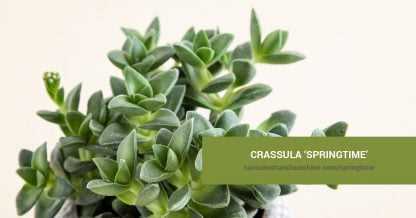
By following these essential tips, you can ensure the successful growth and maintenance of your crassula plants at home. Remember to provide them with the right amount of light, well-draining soil, and proper watering. With minimal care, your crassula plants will thrive and bring beauty to your indoor gardening space.
Crassula Types: A Variety of Stunning Options to Choose From
Crassula is a popular genus of succulent plants that offers a wide range of types and varieties to choose from. Whether you are a beginner or a seasoned succulent enthusiast, there is a Crassula plant that will suit your taste and preferences. Here are some of the stunning options available:
1. Crassula ovata (Jade Plant)
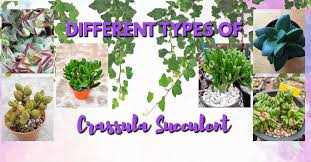
The Jade Plant is perhaps the most well-known and commonly cultivated Crassula type. It has thick, green leaves that resemble the shape of a jade stone. This plant is known for its vibrant green color and its ability to thrive indoors with minimal care.
2. Crassula arborescens (Silver Dollar Plant)
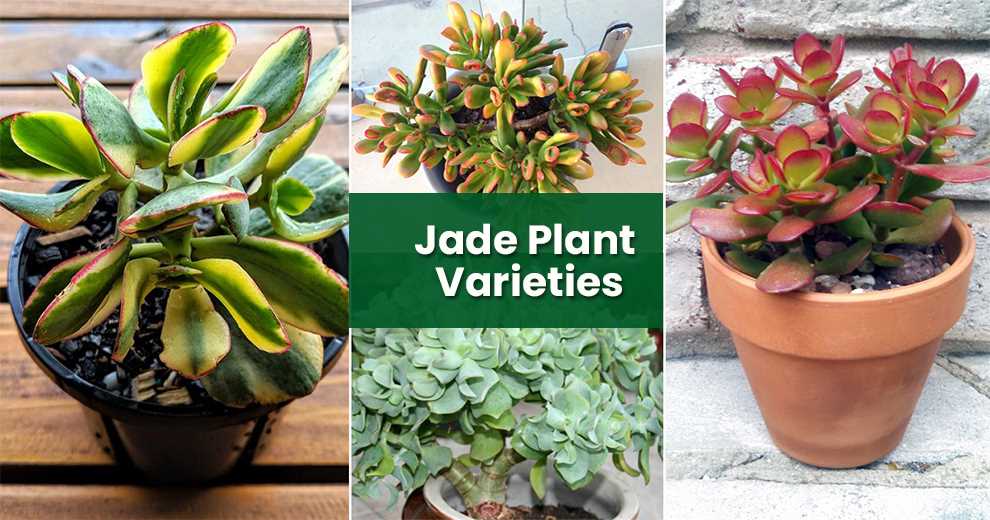
The Silver Dollar Plant is a unique Crassula variety that features round, silver-blue leaves with a waxy texture. It is an eye-catching succulent that adds a touch of elegance to any indoor or outdoor space.
3. Crassula capitella (Campfire Plant)
The Campfire Plant, also known as “Crassula Flame” or “Crassula Campfire,” is a stunning succulent with triangular-shaped leaves that turn bright red at the tips when exposed to more sunlight. The contrast between the green base and the fiery red tips creates a visually striking appearance.
4. Crassula perforata (String of Buttons)
The String of Buttons is another popular Crassula type that features stacked, button-like leaves along cascading stems. This plant is ideal for hanging baskets or trailing over the edges of pots, adding a unique texture and visual interest to any arrangement.
5. Crassula muscosa (Watch Chain Plant)
The Watch Chain Plant is a fascinating Crassula variety with densely packed, cylindrical leaves that resemble a chain of green beads. This plant is a great choice for succulent arrangements and terrariums, as its unique shape adds a touch of intrigue.
6. Crassula rupestris (Baby’s Necklace)
The Baby’s Necklace is a Crassula type that features delicate, trailing stems adorned with small green leaves. The leaves are arranged in a necklace-like pattern, giving the plant its name. This variety is an excellent choice for ground covers or hanging baskets, as it creates a cascading effect.
7. Crassula pubescens (Gollum Jade)
The Gollum Jade is a succulent with elongated, tubular leaves that have a unique “finger-like” shape. The leaves are green with red tips, creating an unusual and attractive appearance. This variety is a favorite among collectors and is sure to be a conversation starter.
These are just a few examples of the stunning Crassula types available. Explore the world of Crassula plants to find the perfect addition to your succulent collection or indoor garden.
Crassula Varieties: Exploring the Unique Characteristics
Crassula plants, commonly known as jade plants or money plants, are not only popular for their low maintenance care requirements but also for the wide range of unique varieties they offer. Each variety has its own distinct characteristics, which make them a fascinating addition to any indoor or outdoor garden. Let’s explore some of the most popular Crassula varieties and their unique features.
1. Crassula ovata (Jade Plant)
The Crassula ovata, commonly known as the jade plant, is one of the most well-known and widely grown varieties. Its thick, fleshy leaves are oval-shaped and have a shiny green color. Jade plants are known for their ability to store a large amount of water in their leaves, allowing them to survive in arid conditions. They are also believed to bring good luck and prosperity, making them a popular choice for many gardeners.
2. Crassula perforata (String of Buttons)
The Crassula perforata, also known as the string of buttons, is a unique variety that features stacked leaves that resemble buttons on a string. These succulents have cylindrical, grey-green leaves with a red or purple color around the edges. String of buttons plants are often grown in hanging baskets, where their cascading foliage adds a touch of beauty and uniqueness to any space.
3. Crassula tetragona (Mini Pine Tree)
The Crassula tetragona, also called the mini pine tree, is a small succulent with erect and cylindrical stems that resemble the shape of a miniature pine tree. Its tightly packed leaves have a green color interspersed with brown or reddish tones. Mini pine trees are a popular choice for bonsai enthusiasts due to their tree-like appearance, which can be further enhanced with careful pruning.
4. Crassula muscosa (Watch Chain)
The Crassula muscosa, commonly known as the watch chain, is a trailing succulent with dense, narrow leaves that resemble a chain. The chain-like appearance of its leaves gives it its unique name. This variety is often grown in hanging containers or as a ground cover, where its trailing foliage creates a beautiful cascading effect.
5. Crassula tetragona (Princess Pine)
The Crassula tetragona, also known as the princess pine, is a tiny succulent with densely packed, needle-like leaves. These leaves have a vibrant green color that turns red or purple under high light conditions. Princess pines are often used in rock gardens or as a ground cover due to their low-growing and spreading nature.
These are just a few examples of the fascinating Crassula varieties available. Each variety has its own unique characteristics and care requirements, so be sure to research and understand the specific needs of the Crassula plants you choose to grow. Whether you prefer the tree-like appearance of the mini pine tree or the cascading foliage of the string of buttons, there is a Crassula variety that will surely capture your attention and add beauty to your garden.
Proper Lighting for Crassula: Ensuring Ideal Conditions
Light is one of the most important factors for the growth and overall health of Crassula plants. Providing the proper lighting conditions is crucial to ensure their well-being.
Types of Lighting
When it comes to lighting, there are two types that are essential for Crassula plants:
- Natural Light: Crassulas thrive in bright, indirect sunlight. They do well when placed near a south or west-facing window where they can receive a few hours of direct sunlight each day. However, direct sunlight for extended periods can scorch their leaves.
- Artificial Light: If you don’t have access to sufficient natural light, artificial light can be used to supplement it. LED grow lights are the best choice for Crassula plants. They provide the necessary spectrum of light and can be adjusted to the right intensity and duration.
Lighting Requirements
Understanding the lighting requirements of your Crassula plants is key to providing them with the best conditions. Here are some guidelines to follow:
- Bright but Indirect Light: Crassulas prefer bright light but not direct sunlight. Provide them with a spot that receives bright, indirect light for several hours each day.
- Avoid Harsh Midday Sun: Direct sunlight during the hottest part of the day can be too intense for Crassulas. Protect them from the harsh midday sun by placing them in a partially shaded area or using a sheer curtain to filter the light.
- Rotate Regularly: To ensure even growth, rotate your Crassula plants every few weeks. This allows all sides of the plant to receive equal amounts of light and prevents them from leaning towards the light source.
- Supplement with Artificial Light: If you are unable to provide sufficient natural light, you can use LED grow lights as a supplement. Set the lights to a timer to mimic a natural light cycle of 12-14 hours of light and 10-12 hours of darkness.
Signs of Improper Lighting
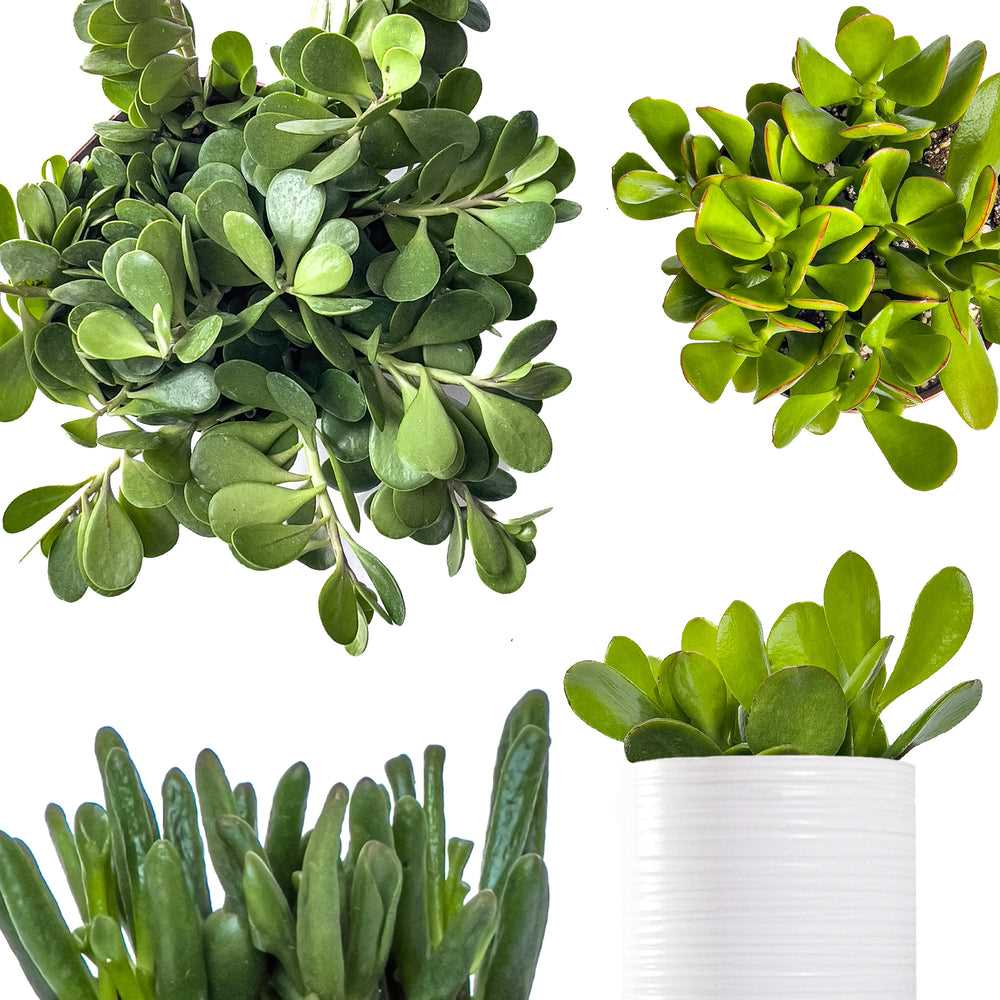
Proper lighting is crucial for Crassula plants, and inadequate light can lead to various issues. Here are some signs to watch out for:
- Leggy Growth: If your Crassula plant starts stretching towards the light source and develops long, spindly stems, it is an indication of insufficient light.
- Pale or Yellowing Leaves: Crassulas with pale or yellow leaves may not be receiving enough light. This can also occur if the plant is getting too much direct sunlight and its leaves are getting burnt.
- Lack of Blooms: Insufficient light can prevent Crassula plants from producing flowers. If your plant is not blooming, it may be due to insufficient light exposure.
By understanding and providing the proper lighting conditions, you can ensure that your Crassula plants thrive and grow to their full potential.
Watering Crassula: Dos and Don’ts for Keeping Them Hydrated
Proper watering is essential for the health and well-being of crassula plants. These succulents have unique water requirements that differ from other houseplants. Here are some dos and don’ts to follow when it comes to watering your crassula:
Do:
- Water your crassula sparingly: Crassula plants are succulents, which means they store water in their leaves and can tolerate periods of drought. Only water your crassula when the top inch of soil feels dry.
- Use well-draining soil: Crassula plants prefer sandy or cactus potting mix that allows excess water to escape easily. Avoid using heavy or moisture-retaining soils that can lead to root rot.
- Check the drainage: Ensure that the pot has drainage holes to prevent water from pooling at the bottom. If necessary, add pebbles or perlite to the bottom of the pot to improve drainage.
- Water from the bottom: Instead of pouring water directly onto the soil surface, consider watering your crassula from the bottom. Place the pot in a shallow tray filled with water for a few minutes, allowing the plant to absorb water through the drainage holes.
Don’t:
- Overwater: One of the most common mistakes in caring for crassula is overwatering. Too much water can lead to root rot and cause the plant to die. Always err on the side of underwatering rather than overwatering.
- Water on a schedule: Instead of watering your crassula on a fixed schedule, evaluate the soil moisture before watering. Stick your finger into the soil to check if it feels dry. If it does, it’s time to water.
- Leave the plant sitting in water: After watering, make sure to remove any excess water that collects in the tray or saucer. Leaving the plant sitting in water can suffocate the roots and promote rotting.
By following these dos and don’ts, you can ensure that your crassula plants receive the right amount of water and thrive in your care.
Crassula Propagation: Easily Creating New Plants
One of the great things about crassulas is how easily they can be propagated, allowing you to create new plants and expand your collection. Here are some popular methods for propagating crassulas:
1. Leaf Propagation
Leaf propagation is one of the most common methods for creating new crassula plants. To propagate a crassula leaf:
- Select a healthy leaf from the mother plant.
- Gently twist the leaf to remove it from the stem, making sure to keep the entire leaf intact.
- Allow the leaf to dry and callus over for a few days.
- Place the callused end of the leaf into a well-draining soil mix.
- Water the soil lightly and keep it slightly moist until roots and a new plantlet start to form.
2. Stem Cutting Propagation
Stem cutting propagation is another popular method for propagating crassulas:
- Take a stem cutting from the mother plant, making sure it has at least a couple of leaf nodes.
- Allow the cutting to dry and callus over for a few days.
- Place the callused end of the cutting into a well-draining soil mix.
- Water the soil lightly and keep it slightly moist until roots develop.
3. Division
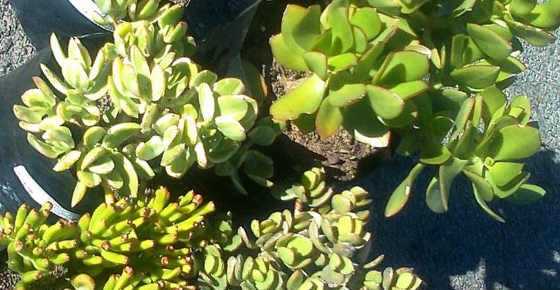
Another way to propagate crassulas is by dividing the mother plant:
- Carefully remove the crassula from its pot, taking care not to damage the roots.
- Divide the plant into smaller sections, making sure each section has a good root system and some stems or leaves.
- Replant the divided sections in separate pots with well-draining soil.
- Water the soil lightly and keep it slightly moist until the plants establish new roots.
4. Offsets
Some crassula varieties produce offsets, which are tiny plants that grow at the base of the mother plant:
- Gently separate the offsets from the mother plant.
- Place the offsets in a well-draining soil mix.
- Water the soil lightly and keep it slightly moist until the offsets develop roots and start to grow.
Remember to provide the new crassula plants with the right growing conditions, such as bright light and well-draining soil, to ensure their healthy growth.
Common Pests and Diseases: How to Protect Your Crassula
Crassulas are generally hardy plants, but they can still be susceptible to various pests and diseases. Being aware of these common problems and taking proactive measures to prevent and treat them can keep your Crassula plants healthy and thriving. Here are some of the most common pests and diseases that can affect Crassula plants and how to protect them.
Pests
- Mealybugs: Mealybugs are small, soft-bodied insects that leave a white, cotton-like substance on the plant. They can cause damage by sucking the sap from the plant, leading to wilting and yellowing of leaves. To prevent and treat mealybugs, regularly inspect your Crassula plants and remove any affected leaves or branches. You can also use neem oil or insecticidal soap to control the infestation.
- Aphids: Aphids are tiny, green or black insects that can cluster on the leaves and stems of Crassula plants. They feed on the sap of the plant, causing the leaves to curl and become distorted. To prevent and treat aphids, you can use insecticidal soap or a strong jet of water to wash them off the plant. Ladybugs and lacewings are natural predators of aphids and can be introduced to the garden to help control the population.
- Scale insects: Scale insects are small, oval-shaped insects that attach themselves to the stems and leaves of plants. They can cause damage by sucking the sap from the plant, resulting in yellowing and wilting of leaves. To control scale insects, you can manually remove them using a soft brush or cotton swab dipped in rubbing alcohol. You can also use insecticidal soap or neem oil to treat the infestation.
- Spider mites: Spider mites are tiny pests that are difficult to see with the naked eye. They can cause damage by sucking the sap from the plant, leading to yellowing and stippling of leaves. To prevent and treat spider mites, you can increase humidity around the plant by misting it regularly. You can also use insecticidal soap or neem oil to control the infestation.
Diseases
- Rot: Crassula plants are prone to root rot if they are overwatered or planted in poorly draining soil. To prevent root rot, make sure to water your plants sparingly and use well-draining soil. If you notice signs of root rot, such as yellowing or wilting leaves and a foul odor, you should remove the affected parts of the plant and repot it in fresh soil.
- Leaf spot: Leaf spot is a fungal disease that causes dark spots or lesions on the leaves of Crassula plants. To prevent leaf spot, avoid getting the leaves wet when watering and provide good air circulation around the plant. If you notice signs of leaf spot, you can remove the affected leaves and treat the plant with a fungicide.
- Mushroom root rot: Mushroom root rot is caused by a fungus that attacks the roots of Crassula plants. It can cause the plant to wilt and eventually die. To prevent mushroom root rot, make sure to plant your Crassula in well-draining soil and avoid overwatering. If you notice signs of mushroom root rot, you should remove the affected plant and dispose of it to prevent the spread of the fungus.
By being proactive in preventing and treating common pests and diseases, you can ensure that your Crassula plants remain healthy and beautiful. Regularly inspecting your plants, maintaining good soil drainage, and providing appropriate care can go a long way in keeping your Crassula thriving.
Tips for Decorating with Crassula: Indoor and Outdoor Ideas
Indoor Decorating Ideas
- Choose a variety of crassula plants with different leaf shapes and colors to create visual interest.
- Place small potted crassula plants on windowsills or shelves to add a touch of greenery to any room.
- Group several crassula plants together on a side table or coffee table to create a mini indoor garden.
- Hang trailing varieties of crassula, such as “String of Buttons” or “String of Dolphins,” in macrame hangers for a boho-chic look.
- Combine crassula plants with other succulents or cacti to create a desert-inspired display.
- Use crassula plants as centerpieces for dining tables or mantels, arranging them with other decorative elements like stones or candles.
- Display crassula plants in terrariums or glass containers to create a unique and eye-catching focal point.
Outdoor Decorating Ideas
- Plant crassula varieties with vibrant colors, such as “Coral Crassula” or “Green Pagoda,” in outdoor garden beds or containers to add pops of color.
- Create a succulent garden using different types of crassula plants, arranging them in a visually appealing pattern.
- Arrange potted crassula plants on outdoor tables or benches to create a welcoming and inviting atmosphere.
- Hang crassula plants in hanging baskets on porches or patios to add vertical interest.
- Place larger crassula plants, such as “Gollum Jade” or “Hobbit Jade,” in decorative pots near entryways or along garden pathways.
- Combine crassula plants with other drought-tolerant plants, such as agave or yucca, to create a low-maintenance and water-wise garden.
- Use crassula plants as borders or edging around garden beds or pathways for a unique and stylish touch.
With its vast array of shapes and colors, crassula is a versatile plant that can be used to enhance any indoor or outdoor space. Whether you prefer a minimalist look or a lush garden, there are endless ways to incorporate crassula plants into your decor. Experiment with different arrangements, containers, and complementary plant varieties to create a unique and beautiful display.
Q&A:
What is Crassula?
Crassula is a genus of succulent plants that belongs to the family Crassulaceae. It includes over 300 species of plants.
What are the common types of Crassula?
Some common types of Crassula are Crassula ovata (Jade Plant), Crassula argentea (Silver Dollar Plant), Crassula perforata (String of Buttons), and Crassula rupestris (Baby’s Necklace).
What are the care requirements for Crassula?
Crassula plants prefer bright light and well-draining soil. They should be watered sparingly and allowed to dry out between waterings. They do well in average room temperatures and can tolerate some coolness in winter.
How often should I water my Crassula plant?
Crassula plants should be watered sparingly, allowing the soil to dry out between waterings. It is better to underwater than to overwater them, as they are prone to root rot.
Can I propagate Crassula plants?
Yes, Crassula plants can be easily propagated through stem cuttings or by separating offsets, also known as “pups,” from the parent plant.
What should I do if my Crassula plant is not growing well?
If your Crassula plant is not growing well, it could be due to insufficient light, overwatering, or poor soil drainage. Make sure it is placed in a bright location, water it sparingly, and ensure the soil is well-draining.
Video:
Stacked Crassulas: See 20+ Square Succulents, Plus Care, Selection, Design, Propagation, Planting







